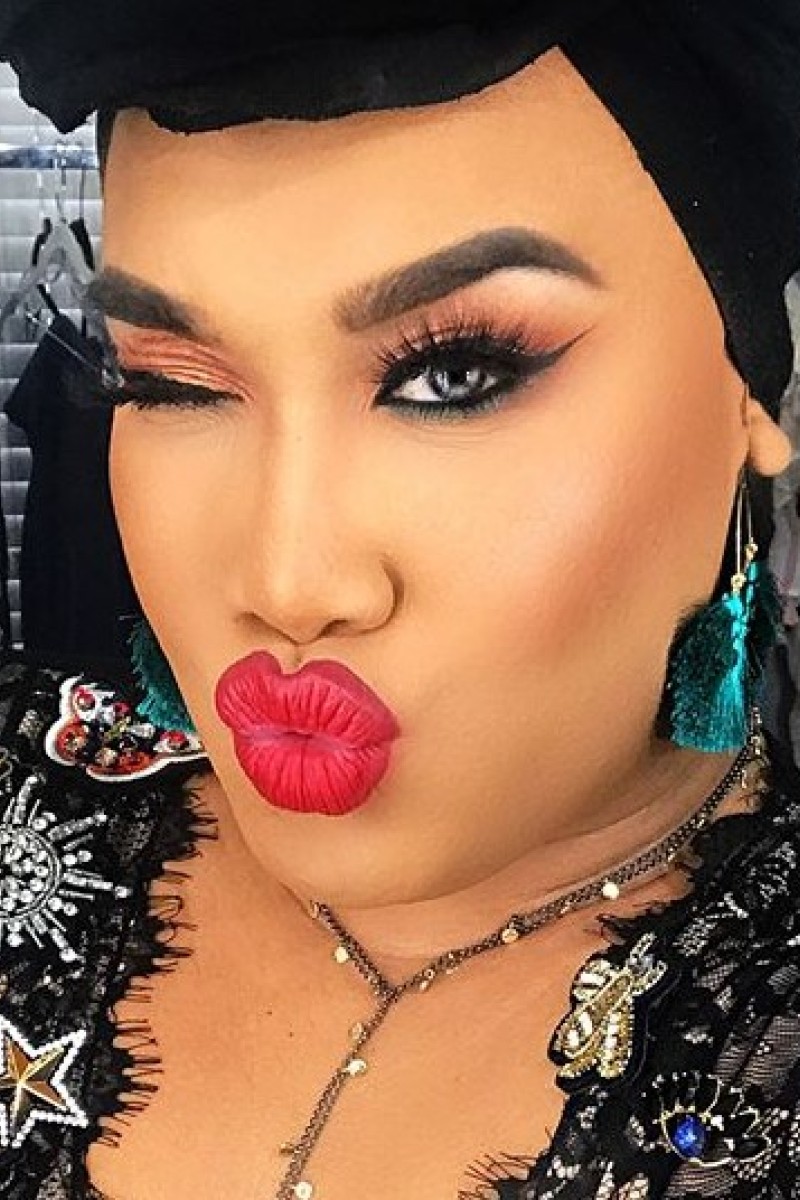
Yassss! The rise of the Instagram make-up look and why it exists
If your eyebrows aren’t on fleek, and your highlight isn’t #goals, then it isn’t Instagram-worthy and therefore it’s not going on the internet
 Patrick Starrr is one of the most well-known YouTubers who do the full-beat/full-glam face.
Patrick Starrr is one of the most well-known YouTubers who do the full-beat/full-glam face.If the term “battle station” brings to mind your make-up table, and you spend more on make-up brushes than you do on food, then you know who Patrick Starrr is, and you’ve probably tried to copy the YouTuber’s stunning looks before.
In one video, he transforms his face into a brightened blank slate spellbinding to look at.
Starrr – who in the real world is a 28-year-old make-up artist named Patrick Simondac – gestures triumphantly at his work. “Now,” he announces, “this is what you call snatched.”
In other words, perfect.
Simondac is one of the internet’s many, many make-up gurus, although, with 3.9 million Instagram followers and 3.3 million YouTube subscribers, he’s among the most recognisable. What he’s known for, besides being woke about gender politics and his sassy humour, is what he calls “the full-beat face”.
This look has become the face of the internet, a strange mirror of Kim Kardashian’s face but also somehow just like Kylie Jenner’s and fellow make-up artistHuda Kattan’s, too.
Open up your Instagram and every other #makeupaddict photo is a full-beat face. The indie make-up brand ColourPop regularly shares selfies of people wearing their matte lipsticks. Apart from differences in skin colour and shade of eye shadow, the women all look the same.
It’s the “Instagram look”, says Christen Irias, another make-up artist and YouTuber, known as Christen Dominique. “When you take a picture, you lose the dimension on your face. The light will wash it away.” Over time, savvy ’grammers realised that with a small mountain of make-up – a Patrick Starrr or NikkieTutorials video will often feature as many as 20 products – you could replace the shadows and the light and then some.
Dominique, who refers to the face as “full-glam”, ticks off what it requires: “An elongated eye, lashes, contouring, bronzing, highlighting, and sculpting,” she says. A theatrical set of drawn-on brows. And finally, it almost always features a hugely overdrawn matte lip.
Dominique, Simondac, and other YouTube make-up artists have made small fortunes posting make-up tutorials. One of Dominique’s “full-glam” vids has 11 million views.
“It’s extreme in person,” admits Dominique. “But it looks great in pictures.”
And the pictures, of course, are what matters when it comes to these sorts of looks.
A lot of money can be made from being internet famous. People record themselves talking about their huge shopping hauls. Phil (Phil Lester) and Dan (Daniel Howell) post videos that consistently gain millions of views. A six-year-old has reportedly made
US$11 million just by recording videos of himself playing with toys.
There’s probably not a more lucrative market to get into, though, than make-up. Some do nothing but review cosmetics, swatching shades of the latest Urban Decay eye shadow palette, while others specialise in the YouTube tutorial, chatting with viewers like friends as they demonstrate how to create the perfect winged liner.
Vloggers emerged almost at the same time as YouTube. Michelle Phan, one of the genre’s first stars, started posting tutorials in 2007. Her first was a lesson in natural-looking make-up: a touch of concealer under her eyes and a slick of rosy Revlon lipstick. It has been viewed 10 million times.
By today’s standards, this tutorial – the blurry footage, the natural look – is quaint. Now, a good make-up video is a full-scale productions, with lighting, editing and a whole bunch of products.
Asked about the rise of the made-up face, Phan laughs. “I’m seeing five-year-olds doing better smoky eyes than me,” she says. “Make-up has changed because of digital. It transformed the market.”
Simondac remembers when make-up’s purpose was largely “to hide,” he says. “Hide a little bit of this, a little bit of that. You wanted to make it look like you had nothing on.”
Now, the goal is to give yourself features you don’t actually possess: brighter, bigger eyes, a narrower, daintier nose, eyes fringed in huge false lashes. “We’re a walking painting,” Simondac says.
But don’t expect to see any of this on the red carpet at the Oscars, much less when you’re out to dinner. The full-beat face was born of the internet, and remains largely for the internet.
It’s like runway fashion, says David Razzano, a New York-based make-up artist for Sephora.
“How many people walk down the street in a couture gown?” he asks. “Not many.”
